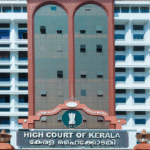PREVENTION OF CORRUPTION ACT, 1988 – SECTIONS 7, 13(1)(d) READ WITH 13(2) – CRIMINAL PROCEDURE CODE – SECTION 374, 313(1)(b), 428
(2025) 7 KCD 182 : 2025 KER 53372
IN THE HIGH COURT OF KERALA
THE HONOURABLE MR. JUSTICE A. BADHARUDEEN
CRL.A NO. 685 OF 2010; 18 JULY 2025
Facts of the Case: The appellant, Dr. CK. Ramachandran, a Medical Officer at Community Health Centre (CHC), Iritty, was accused of demanding and accepting illegal gratification. The prosecution alleged that on 22.09.2003, he demanded ₹250/- from Sri. V.J. George (PW1) for his discharge from CHC, Iritty, after an assault. PW1 paid ₹100/- on 23.09.2003 and later, following a trap, placed ₹150/- (tainted notes) on a teapoy in front of the accused on 25.09.2003, after repeated demands. Subsequent phenolphthalein test showed the accused’s hand turned pink when dipped in sodium carbonate solution. The trial court, the Court of Enquiry Commissioner and Special Judge, Kozhikode, found the accused guilty under Sections 7 and 13(2) read with Section 13(1)(d) of the Prevention of Corruption Act, 1988, and sentenced him to rigorous imprisonment for six months and a fine of ₹1000/- for each offence, with sentences running concurrently.
Appellant’s Contentions: The counsel for the accused argued that proof of demand and acceptance of illegal gratification must be established beyond reasonable doubt. It was contended that there was no clear evidence that the accused physically accepted the MO1 series notes, as they were merely placed on a teapoy. Furthermore, the reliability of the phenolphthalein test was questioned because the MO3 bottle (containing the solution for the test) had no liquid when examined during evidence, casting doubt on the prosecution’s case.
Prosecution’s Contentions: The Public Prosecutor argued that the combined evidence of PW1 (the complainant) and PW2 (the Gazetted Officer) sufficiently proved both the demand and acceptance. The fact that the accused’s hand, when dipped in sodium carbonate solution, turned pink indicated his acceptance of the tainted notes, even if placed on the teapoy.
High Court’s Findings:
Legal Position on Demand and Acceptance: The High Court reiterated the established legal principle that proof of demand and acceptance of illegal gratification is a prerequisite (sine qua non) to establish guilt under Section 7 or Section 13(1)(d)(i) and (ii) (or 13(1)(a)) of the Prevention of Corruption Act. This can be proved by either direct or circumstantial evidence.
Evaluation of Evidence: The Court found the evidence of PW1, supported by PW8, confirmed the initial demand of ₹250/- by the accused on 22.09.2003, the acceptance of ₹100/- on 23.09.2003, and the continued demand for the balance ₹150/- leading to the trap on 25.09.2003.
Acceptance and Phenolphthalein Test: The High Court noted the defense argument regarding the notes being placed on the teapoy and the issue with the MO3 solution, but found that the phenolphthalein test, which showed the accused’s hand turning pink when dipped in sodium carbonate solution, indicated the acceptance of the MO1 series by the accused from the teapoy. The combined evidence was deemed sufficient to establish the ingredients of the offences.
High Court’s Decision: The High Court held that the trial court was justified in finding the accused committed offences punishable under Sections 7 and 13(1)(d) read with Section 13(2) of the Prevention of Corruption Act. Therefore, the conviction did not require any interference.
Sentence Modification: Considering the request from the counsel for the accused, the High Court modified the sentence:
For the offence under Section 7 of the PC Act, the rigorous imprisonment of six months was reduced to three months rigorous imprisonment. The fine of ₹1000/- was retained, with a default sentence of two weeks rigorous imprisonment.
For the offence under Section 13(2) read with Section 13(1)(d) of the PC Act, the rigorous imprisonment of six months was reduced to two months simple imprisonment. The fine of ₹1000/- was retained, with a default sentence of two weeks simple imprisonment.
The substantive sentences were directed to run concurrently, and set-off was allowed under Section 428 of the CrPC.
Final Order: The criminal appeal was partly allowed only to the extent of modifying the sentence; the conviction was upheld. The accused was directed to surrender before the trial court to undergo the modified sentence.


